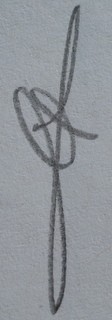
‘Diana’ [1932] by Anna Hyatt Huntington, Aluminum, gold plate and silver plate, 32 1/2 x 9 1/2 x 8 1/2 in.
Relocating to New York City to enable her career to flourish in 1902, A.H. Huntington is one of the greatest representations of female empowerment within art.
Truly inspiring.
Her ‘Diana’ figure shown above was produced in varying sizes, cast materials and alternative compositions. The New York Historical Society and NYC’s National Academy of Design have two larger versions of this cast.
The beauty of this sculpture is immediately eye-catching.
Okay, what does this sculpture reveal to us?
The bow points upwards signalling a contrary position to divinity. Artemis, the Greek name of the latinised Diana, is posturing her own divine power. An understanding of specific ancient texts regarding the usage of arrows in ancient culture as ‘signs’ is intimated in this piece.
Likely Anna Hyatt Huntington was aware of such understated references during her prior sculptural studies and research.
Art professionals know that Anna was particular about physiological designs in terms of historical, anatomical and cultural placement. The ‘Diana’ figure has symbolised adoration of the female form for millenia. From a military perspective the upward positioning of the bow could also represent ambition to further exceed in contested plans.
‘Here on Earth the answer is always a matter of the Height, the Breath and the Depth of things.’
The way Huntington has intended her Diana to pose alluringly beckons the viewer in a feminine way to support her cause.
The figure is both subjective and authoritive in design – a uniquely crafted balance. This might help us to gain insight into Anna’s idea of marital harmony. Anna is not forcing her artistic idea of ‘Diana’ upon you.

‘El Cid Campeador’ [1927] by Anna Hyatt Huntington, Bronze statue on stone at the New York Hispanic Society of America. Photograph courtesy of the HSA – NYC.

‘El Cid Campeador’ by Anna Hyatt Huntington.
Photograph courtesy of http://xtremearttourists1.blogspot.co.uk/
‘El Cid Campeador’ in New York by Huntington, pictured twice above, is a highly useful study for fledgling sculptors to investigate. If you’re studying art I would encourage you to do so.
Anna and her husband Archer enjoyed researching fine details. Their vision of art is based upon facts, realism and visibly tangible elements. Regardless of the subject matter Anna was always looking to create a faithfully unique sculpture of the subject wherever possible.
The process of learning about an intended commission preceded her clay studies as an integral part of the intellectual design long before the delivery or final unveiling. Archer was a constant source of inspiration for Anna through his own scholarly interests.
Yet, Anna was already self-sufficient from her art career prior to their marriage. From the 1910’s Anna earned a monumental amount of money per annum – $50,000. This would be at least $1.2 million US dollars annually – adjusted for 2017!

‘The Torch Bearers’ [1954] by Anna Hyatt Huntington, Aluminium sculpture, 6m x 6m x 6.2m. At Ciudad Universitaria in Madrid, Spain. Photograph by JL De Diego.
‘The Torch Bearers’ is a truly moving piece of work, part-reminiscent of Michelangelo’s near-ineffable Sistine Chapel ceiling artwork. If you can visit any of Anna’s intricate sculptures I’m sure you will enjoy the whole experience.
Anna Hyatt Huntington’s sculptures along with the ancient ‘Artemision Bronze’ at the National Archaeological Museum in Athens Greece can only be best appreciated visiting them in person.
As friends.
N.B. In keeping with todays article theme of female artistry please check out Marie Hammer’s art, hyperlink below. Her husband, Rusty, writes the Xtreme Art Tourist blog aforementioned.
They both love art as much as Archer and Anna Huntington. After reading about Archer’s Hispanic museum quest from his boyhood this takes some serious doing!
Marie’s website:





















